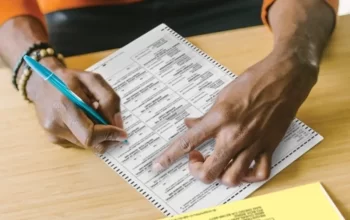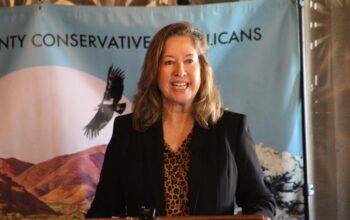This is a story personal to me. I was the designer of the POW/MIA bracelet, along with Bob Dornan and Carol Bates. I spent seven years, full time working on behalf of these men. For all those years I worked with Anne Mills Griffith—she is a true American hero.
Please read this story. The POW/MIA issue is an example of the failure of the American government to protect those in the military. Kissinger signed the Peace Treaty, BEFORE he got the listing of POW’s. But, he told me, Anne and a few others, that he would not sign until we got a full accounting. He lied.
Let me know your thoughts on this issue.
How A Group Of Women Compelled The Government To Find America’s Missing In Action

BY: TAYLOR BALDWIN KILAND, The Federalist, 4/27/23 https://thefederalist.com/2023/04/27/how-a-group-of-women-compelled-the-government-to-find-americas-missing-in-action/?utm_source=rss&utm_medium=rss&utm_campaign=how-a-group-of-women-compelled-the-government-to-find-americas-missing-in-action&utm_term=2023-04-27
Until the Vietnam War, those who were missing in war were just left missing. Then a small group of women changed all that.
“You gotta be kiddin’ me.” Ann Mills-Griffiths is almost speechless. Almost.
It’s Aug. 14, 2018. She is sitting at her desk in Falls Church, Virginia, on a sweltering summer day, across from three officials from the Defense POW/MIA Accounting Agency, or DPAA. They had called her this morning, asking to see her in person. “I didn’t think anything of it because I talk to them all the time.”
They have news. They have retrieved a few tiny bone fragments from the shallow, muddy waters off the coast of the fishing village of Quynh Phuong, north of Vinh. Using DNA samples she has given DPAA, they have confirmed that the osseous material is her brother’s, Navy Cdr. James B. Mills.
It has been 52 years since he disappeared during an armed reconnaissance mission, the seventh mission of his second deployment to Vietnam. Mills, a radar intercept officer, and his pilot, Capt. James Bauder, were flying an F-4B Phantom when they disappeared from radar in the dead of night. No flak, missiles, nor anti-aircraft artillery were in the area. No explosions were seen or heard. Search and rescue aircraft saw nothing. Bauder and Mills had vanished.
Ann was at the home of her parents in Bakersfield, California, when she received the news. A chaplain and the local high school football coach, also a Navy reservist, knocked at the Mills’ front door in his uniform. Ann, then 25, escorted them inside. “I looked at them with dread. And they said, ‘Yes, it’s about Jimmy. But he’s only missing.’” Jimmy and Ann were 11 months apart, Irish twins. “We were very close.”
Only missing? Not knowing what happened to her older brother for five decades has been her driving force. Uncertainty is so much worse than death. It is a lifetime sentence. Yet she is also realistic. “I knew the possibility of finding his remains was remote.” Staring at the DPAA officials, Ann admits, “I never expected to get this news.”
Between 1993 and 2003, the case of Bauder and Mills was investigated 15 times. Then, in 2006, in the shallows of the South China Sea, a fisherman’s net snagged on something solid. Squinting over the side of his sampan, the old man saw a large piece of metal wedged in the muck. The scrap might be worth something if he could figure out how to get it ashore. What he pulled out of the water was a large canopy frame of a plane.
Five underwater investigations were needed to find the rest of the wreckage. After that, DPAA sent divers four separate times looking for remains. They found some, of Bauder, in 2017.
But none of Jimmy. “When Bauder’s remains were recovered in 2017, I knew my brother was there. I knew he had died and where.” But DPAA would not give up and insisted on one last dive. “This is the last time,” Ann insisted. “I don’t want any more resources spent on my brother’s case.”
A Final Resting Place
Tasked with the mission to find and repatriate all missing men, DPAA vows to stay the course until the mission is complete. On their 20th search, a diver emerged from the murky waters with buckets of sediment. Working from a nearby barge, forensic archeologists poured the muddy silt through a sieve, hoping it would catch what had been hiding in this watery grave for half a century. And it did. One of the specialists held up a tiny piece of osseous material. It was a rib bone belonging to Mills.
With full military honors, Ann buried her brother at Arlington National Cemetery in June 2019. Ann is still seeking answers for other MIA families, more than 50 years after the war ended. Because it was never just about her brother. Before he disappeared, before there were 2,500 Americans missing from the Vietnam War, and long before there was DPAA, there was the U.S. Graves Registration Service, established in 1917. This unit was responsible for identifying remains after the war’s end and burying them, using mostly dog tags and the accounts of fellow soldiers.
Finding the Missing
But those who were missing in war were just left missing. Until the Vietnam War, when a small group of women changed all that. These women — wives, sisters, and mothers of the men left unaccounted for after the Vietnam War ended — took matters into their own hands. They made the fate of the missing a national priority.
After the war’s end, the organization these women had founded during the war, the National League of POW/MIA Families, continued to exert pressure on the U.S. government. They insisted the Pentagon create a permanent government organization whose sole task was to resolve the still-lingering issue of the more than 2,500 missing men in Southeast Asia. That organization, established in January of 1973, was named the Joint Casualty Resolution Center. After many name changes, the JCRC became DPAA. The organization has an annual budget of $130 million, a highly skilled staff of 700 professionals, and the tagline “Fulfilling America’s Promise” — a promise made to a handful of military wives more than 50 years ago.
Changing Our Nation’s Approach to POWs
This same group of women also fundamentally altered how the United States considers prisoners of war, who now have national value. Consequently, the United States fights its wars in ways to minimize the potential of capture by the enemy. It was no accident that the United States ended its longest conflict in 2021, in Afghanistan, without a single POW or MIA. The nation can still tolerate those killed in action (KIAs) but not POWs nor MIAs.
Likewise, this policy shift has influenced other countries around the world. The families of missing and captive service members in Kuwait, Israel, and Australia have all loudly pressured their governments to follow the American lead and “leave no man behind.” And Vietnamese families, having witnessed the substantial media coverage American missing men have received, have demanded their government do the same for their wartime missing.
As of this writing, there are 1,579 husbands, fathers, sons, and brothers still missing from the Vietnam War. Their wives, mothers, fathers, brothers, sisters, daughters, sons, and now grandchildren continue holding the U.S. and foreign governments accountable for determining the fate of each man. While the mission stipulates the United States will make every conceivable effort to leave no man behind, the reality differs. The toll of the missing men will never be zero. The job will never be finished. But the effort is noble and uniquely and quintessentially American; the return of long-lost servicemen is always celebrated and commemorated.
It’s all thanks to a handful of women, like Ann Mills-Griffiths, who has no plans to retire. She believes her job is to keep the government honest. Keep on keeping on. She has taken the tragedy of her brother and turned it into her life’s work. Her mother always told her to “Make a purse out of a sow’s ear.” Signing off every email, she hails: “As ever and onward.”
This article is adapted from the author’s new book, “Unwavering: The Wives Who Fought to Ensure No Man is Left Behind” (Knox Press, May 2, 2023).
Taylor Baldwin Kiland has written three books about our nation’s POWs and their families. A former naval officer and the third generation in her family to serve in the Navy, Taylor was raised in Coronado, California, and Alexandria, Virginia, where she grew up with many of the Vietnam POW and MIA families.



